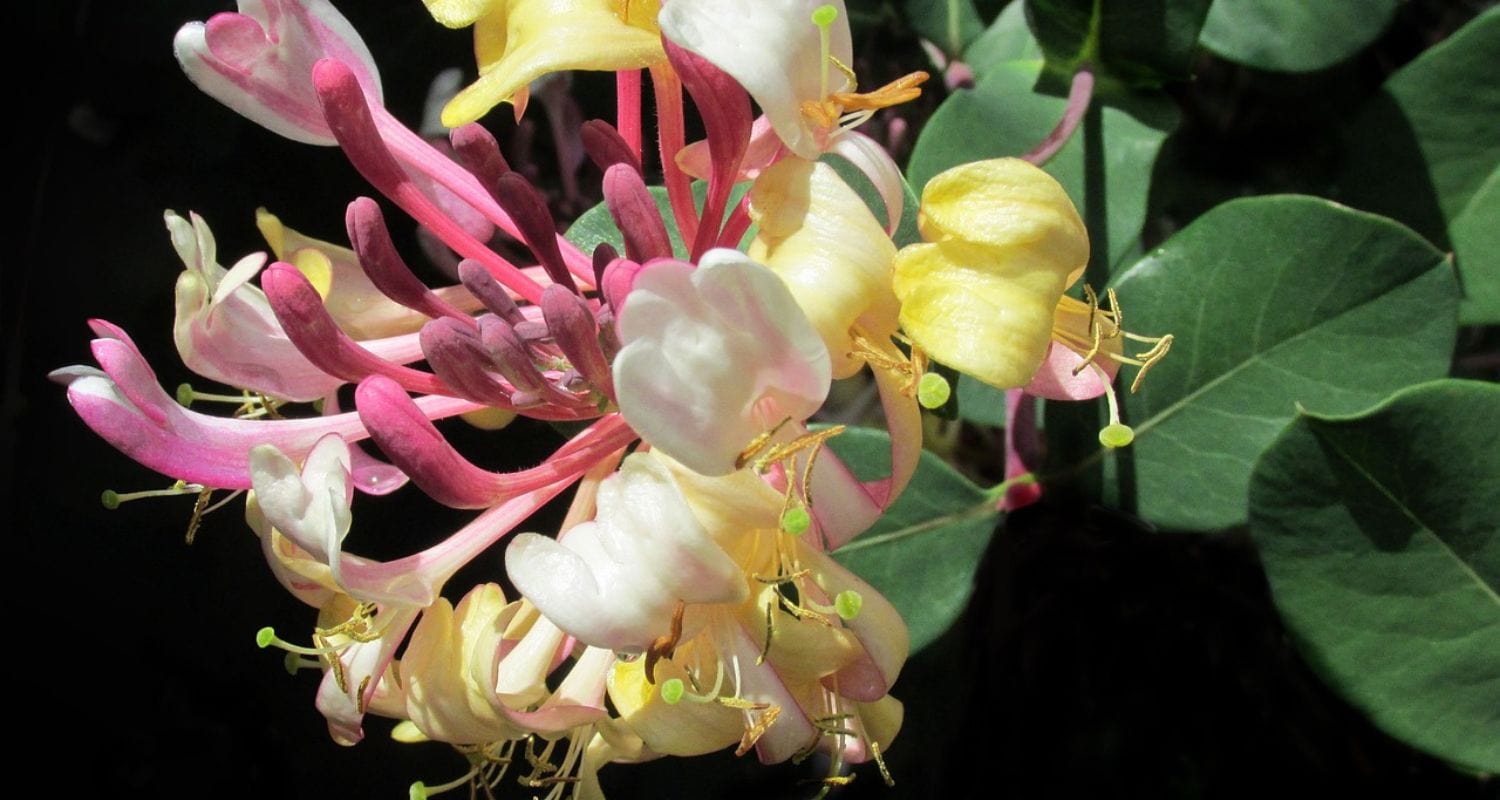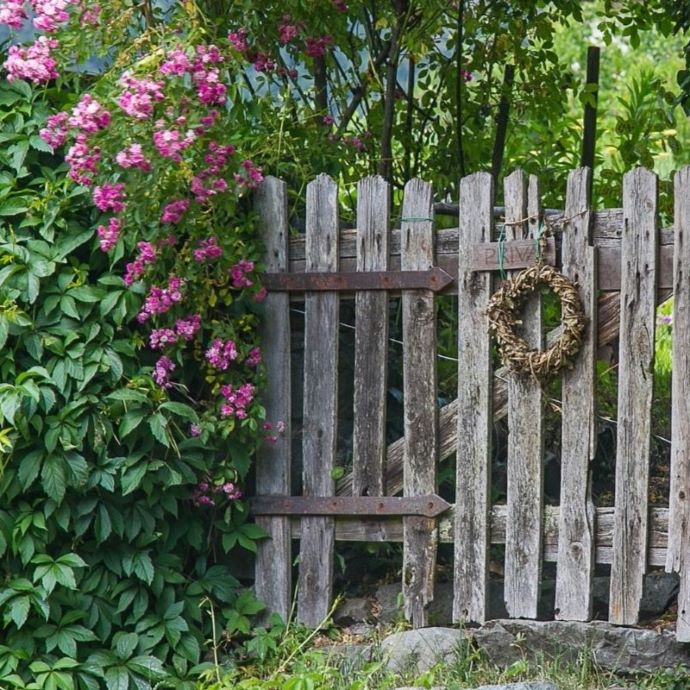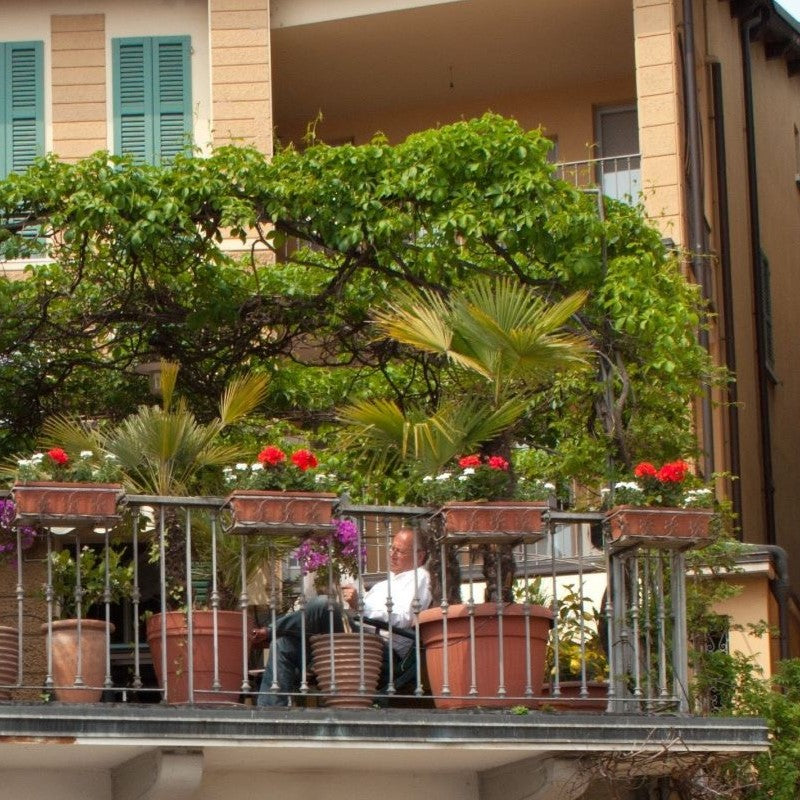Advice & Inspiration
Planting Honeysuckle: The Complete Guide

Line the streets and sound the horns for majestic honeysuckle with its distinctive, trumpet-shaped flowers and wonderful fragrance! An iconic climber, honeysuckle oozes character and charm wherever it’s found (I’ve seen heaps of it climbing in the woods near my house recently, and it legitimately puts a smile on my face every time I see it). With a plant this good, you want to get the planting right, and that’s exactly what this guide is all about.
Jump to:
- When to plant honeysuckle
- Where to plant honeysuckle
- How to plant honeysuckle
- Growing honeysuckle in pots
- Propagating honeysuckle plants
- Watering honeysuckle plants
- Feeding honeysuckle plants
- Mulching honeysuckle plants
- Pruning honeysuckle plants
- Training honeysuckle plants
When to plant honeysuckle
There are many different types of honeysuckle, including both deciduous and evergreen options, and the optimal time for planting depends on which variety you’re growing. Deciduous honeysuckles (like early Dutch honeysuckle) are best planted towards the end of winter, whilst evergreen honeysuckles (such as Hall’s Japanese honeysuckle) should be planted in either autumn or spring.
Shrubby honeysuckles (like winter-flowering honeysuckle) can be planted pretty much at any time of the year, though you may want to avoid the heart of summer, as the heat can stress the plant and prevent it from establishing as nicely as it otherwise might.

Where to plant honeysuckle
Both climbing and shrubby honeysuckles tend to prefer either full sun or dappled shade. Whilst full sun will encourage greater flowering, it can also increase the risk of problems like leaf scorch, so a bit of light shade doesn’t go amiss.
Remember, honeysuckles have traditionally grown most abundantly in woodlands (as my daily walks being pulled around by my dog will attest) so they’re well-used to that filtered kind of sunlight.
In fact, they actually appreciate their roots being kept somewhat shaded. So, if you’re able to plant your honeysuckle somewhere where its roots get a bit of shelter from the sun, then that’s ideal.

How to plant honeysuckle
When you’ve chosen your variety and you’re ready to plant, get your spade and put some sunglasses on for dramatic effect. Let’s get planting (said whilst looking at an imaginary film camera). Honeysuckles tend to prefer fertile, well-drained soil so dig some organic matter into your soil prior to planting, just to give your plant a helping hand as it establishes.
For climbing honeysuckles, you’ll benefit from installing a wire trellis framework on your fence or wall (as, to quote Walter Scott in his poem, The Lady of the Lake, “honeysuckle loved to crawl Up the low crag and ruin’d wall”). Dig a planting hole about 45cm from the vertical surface you want your honeysuckle to climb up. You want it to be as deep as the pot it came in and around 5cm wider than the pot on all sides.
Place your honeysuckle in the hole, backfill it with soil and then firm the plant in. Give it a good watering and then tie the plant stems to the trellis to give it an initial nudge in the right direction. Ultimately, as the plant grows it will twine itself around the wire supports, so you won’t need to do any more tying in. Give it a good mulch (something like strulch works well) and it’ll be on its merrily growing way.
Everything mentioned above also applies to shrubby honeysuckles, except for the need to tie them into a supporting structure. Plant them in a bed or border and they’ll be happy as a pig in sweetly-scented muck.

Growing honeysuckle in pots versus in the ground
Don’t worry if you’ve only got a patio, rather than mile after mile of loamy flower beds, because you can easily grow honeysuckle in a pot – we think a balcony-grown honeysuckle truly is a sight to behold. When selecting your container, go big or go home, that’s our motto.
A larger container helps the plant better establish its roots and is more suitable for when your honeysuckle gets bigger (which it will). Our favourite has got to be something made from terracotta, but we know these are on the expensive side, to put it lightly, so really, anything sturdy with ample drainage holes works just fine.
Placing your pot on risers to elevate it will help with drainage and prevent your pot from standing in water; honeysuckles don’t like waterlogged soil (who does?) so choosing a compost that drains well is equally important.
If you’re growing a vigorous climbing honeysuckle in a pot, then you’ll need either: a support within (or surrounding) the pot itself, like an obelisk, or to place your pot by a wall or fence which has a trellis or wire framework attached to it.

Propagating honeysuckle plants
Growing honeysuckle from seed
Now, this isn’t going to be the route that most gardeners take, but you can in fact grow honeysuckle plants from seed, and all you need are some of the berries that typically appear on the plant in autumn.
Mash up the berries to extract the seeds, then stratify them for a month or two in the refrigerator. Once stratified, plant your seeds in seedling trays – fill the trays with seedling mix, then plop in your seed, cover it with a little bit more of the seedling mix, then pop the tray on a sunny, bright windowsill for a few weeks.
Once the seedlings have started growing, harden them off, then either pot them on in individual pots to grow further, or transplant them directly into their final planting spot in the garden. If you’re going down the latter route, make sure to wait until the seedlings are around 10cm or so in height, have several sets of true leaves, and that the risk of frost has passed before moving your seedlings into the garden.
Growing honeysuckle from cuttings
To grow honeysuckle from cuttings, take your secateurs in the heart of summer and snip off short lateral stems (doing this in the morning is best) that have some give to them. Pot each cutting (which can usually be split into a few smaller cuttings) around the side of a pot filled with compost, then cover the compost with horticultural grit, move the pot to a warm, sunny (indirect light) spot and leave it to grow on, watering regularly.
Growing honeysuckle from plants
The easiest (and quickest) way to grow a honeysuckle plant is to buy it as an established plant. It will typically come in a 9cm, 2L or 3L pot, and may come featuring some bamboo support canes. Refer back to the “How to plant honeysuckle” section for planting advice.

How to grow honeysuckle
Now you’ve planted your honeysuckle, it’d be remiss of us if we didn’t give you some top tips on how to actually look after the damn thing!
Watering honeysuckle plants
Give your honeysuckle a good watering once planted, and then continue to water it routinely throughout its first growing season. This will help it establish nicely and lay down a good system of roots.
Beyond this, they’ll only really need watering in hot, dry spells – climbing honeysuckle plants may need additional watering because they’re in the shelter (or rain shadow) of the wall or fence they’re trained against. If the soil seems dry, give it a good watering.
Feeding honeysuckle plants
Unlike me, come 11AM on a bleary-eyed Monday morning (biscuit barrel, beware…), honeysuckle plants aren’t particularly hungry feeders. They benefit from an annual feed of a double cheeseburger, extra large fries and chocolate milkshake fertiliser with a relatively balanced NPK ratio, like Blood, Fish and Bone or something like Empathy After Plant.
Mulching honeysuckle plants
Apply a generous amount of mulch around the base of your honeysuckle plant every spring. Doing this has a couple of main benefits; firstly, it helps retain moisture, which is particularly important if your soil is prone to drying out, and secondly, it can help suppress the growth of weeds which can compete with your honeysuckle plant for nutrients and water. We’ve already mentioned strulch, but other options include leaf mould, pine needles and bark chippings.
Pruning honeysuckle plants
We’ve written a whole article about pruning honeysuckle plants, so go check that out if you want all the gory deets (just kidding, it’s definitely PG-rated). In brief, though, you probably won’t need to prune your plant for its first couple of years, however, as it matures pruning becomes more necessary.
For early-flowering climbing honeysuckles, prune them immediately after flowering has finished, cutting stems back by about one third. Late-flowering climbing honeysuckles should be gently thinned out in spring, taking care not to lose the flower buds (these varieties flower on the current year’s growth).
Shrubby honeysuckles only really need pruning to tidy them up; post-flowering, cut roughly a quarter of the old growth back to near the plant’s base. Additional hard pruning (renovating) can be carried out in winter on either honeysuckle type once they’re nice and established. Cut back all stems to roughly 60cm from the base of the plant and this will encourage greater growth in the year to come.
Training climbing honeysuckle plants
There are several options available to you when it comes to training a climbing honeysuckle plant, a couple of which we’ve already outlined (trellises or wire frameworks). You can also train your honeysuckle up an obelisk, pergola, arbour or archway – just make sure your support is nice and sturdy as mature honeysuckles can grow quite heavy. You can even train your honeysuckle in an espalier style!

Final thoughts
So, there you have it, everything you need to know about planting honeysuckle. Few flowers look or smell as sweet, and whatever variety you plant, whether climbing or shrubby, evergreen or deciduous, there’s no doubt that the humble honeysuckle (also known as woodbine) most definitely deserves all the plaudits it gets (and more).



















